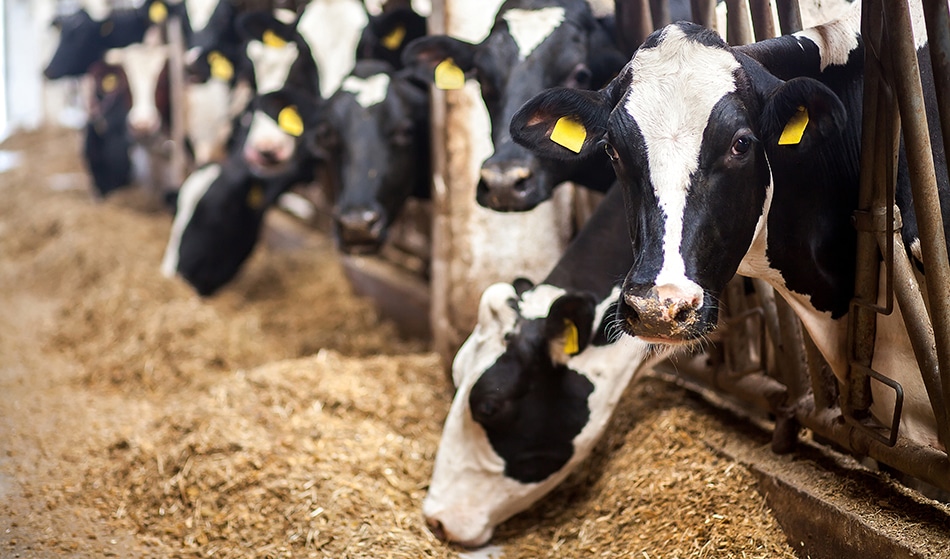Codex Alimentarius Microbiological Criteria for Feed Products
The Codex Alimentarius Commission, established by the World Health Organization (WHO) and the Food and Agriculture Organization of the United Nations (FAO), sets international standards, guidelines, and codes of practice related to food safety and quality. One critical aspect is the Codex Alimentarius Microbiological Criteria for Feed Products, which provides a framework for ensuring that animal feed does not pose risks to human health or animal welfare.
The primary goal of these criteria is to prevent contamination of feeds with pathogenic microorganisms, toxins, and other harmful substances. Compliance with these standards ensures the safety of animal products derived from such feeds, thereby safeguarding public health. This service plays a pivotal role in ensuring that feed manufacturers adhere to global best practices.
The Codex Alimentarius Microbiological Criteria for Feed Products encompasses various parameters, including pathogen limits, toxin thresholds, and guidelines for good manufacturing practices (GMP). These criteria are based on scientific evidence and risk assessments. For instance, the standards outline acceptable levels of Salmonella, E. coli O157:H7, and other bacteria that could pose health risks if present in feed.
The testing process involves multiple steps to ensure comprehensive evaluation of feeds for microbiological safety. Samples are collected from various stages of production, including raw materials, intermediate products, and final feed formulations. Laboratory analysis includes both quantitative and qualitative methods using advanced techniques such as polymerase chain reaction (PCR), ELISA, and culture-based assays.
Compliance with the Codex Alimentarius Microbiological Criteria is mandatory for many countries around the world. Failure to meet these standards can result in product recalls, fines, and loss of market access. This underscores the importance of this service in maintaining a robust quality assurance system within feed manufacturing facilities.
The impact of non-compliance on public health cannot be overstated. Contaminated feeds could lead to the spread of zoonotic diseases among animals and humans, causing severe illness or even death. Therefore, ensuring that every batch of feed complies with these stringent standards is crucial for maintaining a safe food supply chain.
In summary, this service provides essential support in meeting international standards for feed safety, thereby enhancing trust and confidence in the global animal feed industry.
Why It Matters
The Codex Alimentarius Microbiological Criteria for Feed Products is not just a guideline; it's a critical component of safeguarding public health and ensuring food safety. The criteria address several key issues:
- Pathogen Control: Ensures that feed does not contain harmful pathogens like Salmonella, E. coli, or Listeria.
- Toxin Management: Limits the presence of mycotoxins and other toxins that can contaminate feeds during processing or storage.
- Good Manufacturing Practices (GMP): Promotes consistent quality in feed production through standardized procedures.
By adhering to these criteria, feed manufacturers can prevent contamination of animal products with harmful microorganisms and toxins. This not only protects the health of livestock but also ensures that meat, milk, eggs, and other dairy products derived from such animals are safe for human consumption.
The significance of this service extends beyond just compliance; it contributes to maintaining a sustainable and ethical food production system. By reducing contamination risks, feed manufacturers can enhance animal welfare, improve productivity, and contribute positively to environmental sustainability.
Customer Impact and Satisfaction
Adhering to the Codex Alimentarius Microbiological Criteria for Feed Products has a direct impact on customer satisfaction. For feed manufacturers, meeting these standards demonstrates their commitment to quality and safety, which is crucial in today’s competitive market.
- Better Reputation: Compliance enhances the reputation of a company, making it more attractive to potential customers.
- Increased Sales: Satisfied customers are likely to recommend your products, leading to increased sales and market share.
- Regulatory Approval: Meeting these criteria increases the likelihood of approval from regulatory bodies worldwide, ensuring easier access to international markets.
For procurement teams responsible for sourcing safe feeds, this service provides peace of mind knowing that they are dealing with trusted suppliers who prioritize quality and safety. This reduces the risk of recalls and legal issues, saving time and resources in the long run.
In conclusion, ensuring compliance with Codex Alimentarius Microbiological Criteria is a win-win situation for both manufacturers and customers, contributing to a safer and more sustainable food production system.
Use Cases and Application Examples
| Feed Type | Microbial Limit (CFU/g) | Toxin Threshold (ppm) |
|---|---|---|
| Grain-Based Feed | <100 CFU/g Salmonella | <20 ppm Aflatoxins |
| Animal Protein-Based Feed | <50 CFU/g E. coli O157:H7 | <30 ppm Deoxynivalenol (DON) |
| Fish Meal-Based Feed | <200 CFU/g Listeria monocytogenes | Not Applicable |
| Sampling Frequency | Test Methods | Reporting Time |
|---|---|---|
| Monthly for bulk raw materials | Culture-based methods and PCR | <24 hours |
| Semi-monthly for final feed products | HPLC, ELISA, and culture-based methods | <7 days |
- Grain-Based Feed: This type of feed is subject to high microbial load due to its composition. Samples are taken monthly from bulk raw materials to ensure they do not exceed the specified Salmonella limit.
- Animal Protein-Based Feed: Special attention is given to E. coli O157:H7 as it poses a significant risk to animal health and subsequent human consumption. Sampling occurs semi-monthly, with additional testing for mycotoxins like DON.
- Fish Meal-Based Feed: Given the aquatic origin of fish meal, Listeria monocytogenes is closely monitored due to its potential to cause listeriosis in humans and animals. Testing frequency is higher compared to other types of feed.





